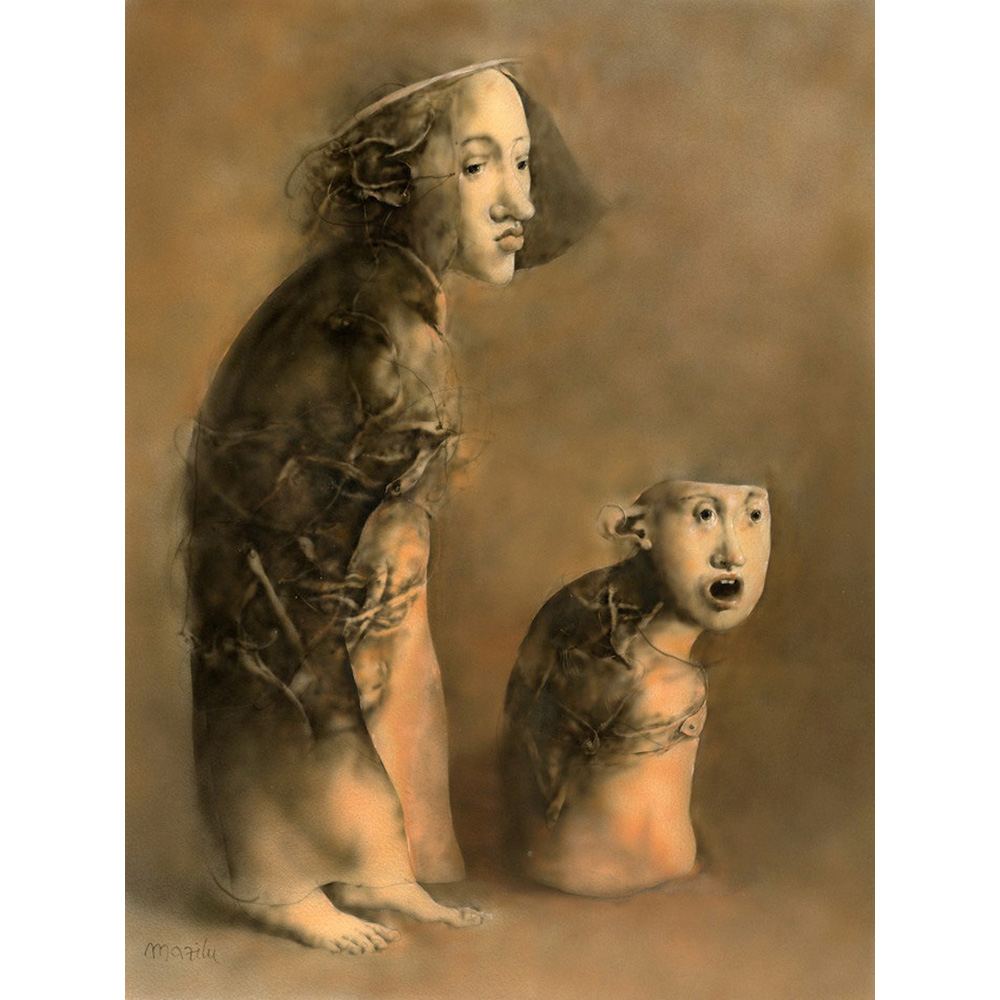Artwork Description
Georges Mazilu – Les poupées russes
Dimensions: 30 x 22″ unframed / 30 x 22″ unframed
Year: 2009
Medium: acrylic and gouache on paper
In Les Poupées russes, Mazilu references Russian dolls, where smaller figures are stored in larger versions of themselvess, suggesting that the figure towards the right has been pulled from that on the right. Mazilu’s work reveals an attentiveness to the human form achieved through his many years of classical training, seen in the delicate lines distinguishing the two figures and through his careful shading. Mazilu’s painting has drawing-like qualities, suggested through a limited color palette and painterly technique that mimics charcoal or pastel.
While Georges Mazilu’s oeuvre often focuses on the human form—despite his characters’ unusual proportions and physical compositions—his works begin as loose abstractions that gain recognizability through process. Mazilu describes his paintings as mapping the transition from unconscious to conscious processing and often navigate the tension between his ‘will’ and ‘possibilities’. Mazilu was born in Romania and quickly developed an affinity for producing art, eventually pursuing formal training at the prestigious Grigorescu Institute of Fine Arts. After following what might be considered a classical education, Mazilu’s work began to develop a contemporary edge as it encountered the swell of modern art. Mazilu’s works often combine realism with the absurd and touch on the styles of canonical surrealist artists like Hieronymus Bosch or Salvador Dali. Mazilu’s paintings employ muted color palettes and simple backgrounds, drawing viewers’ attention to his carefully rendered characters posing in formal portraiture style or displaying less-than-human behavior.
By Keira Seidenberg, Art History/Gender Studies student, McGill University

